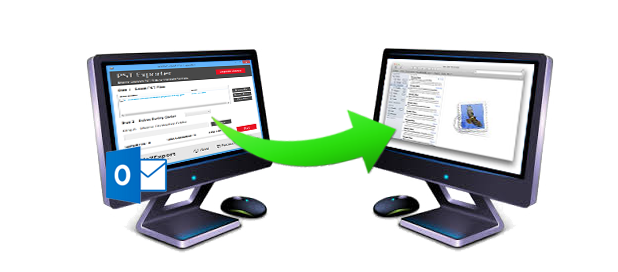
- MAKE HDMI CABLE WORK FOR MAC MOVIE
- MAKE HDMI CABLE WORK FOR MAC PRO
- MAKE HDMI CABLE WORK FOR MAC PC
- MAKE HDMI CABLE WORK FOR MAC TV
- MAKE HDMI CABLE WORK FOR MAC MAC
(Important!! If your iMac has a Mini Displayport/Thunderbolt port then you can only connect other Macs. The iMac is running macOS High Sierra 10.13.6, which is the last possible macOS version for the machine. Mindy, et al., I have a late 2009 27″ iMac that I use as a monitor for PCs that are running Windows or Ubuntu Linux.
:max_bytes(150000):strip_icc()/15-how-to-tweak-when-outlook-sends-and-receives-emails-56b05d4d0b564ec885ea5fce0e1eba64.jpg)
MAKE HDMI CABLE WORK FOR MAC PC
Have you tried using your iMac as a PC monitor? Share your thoughts and experiences in the comments below. Having dual monitors can make gaming, working, and homework much easier, so it’s certainly worth a try. While you may have difficulty connecting the two if certain criteria are not met, for those with the proper cables and the Target Display Mode equipped, you can use an iMac as a monitor for a PC. If you have the right devices and cables/adapters, using an iMac as a PC monitor is pretty easy. For example, if you are mirroring to a 5K iMac, the resolution of 2560 x 1440 should work fine, but this depends on the exact iMac and PC model you are using. You might need to go into ‘Display Settings’ and change the resolution so it appears the same on both machines. Click on the iMac and your PC should show both displays.

The PC will look for available displays and your iMac should appear in the results. Select the ‘Project’ tile and choose ‘Connect to a wireless display.’ Move onto the PC and access the ‘Action Center’ from the bottom-right corner. Under ‘Projecting to this PC,’ click on the first drop-down menu and choose ‘Available everywhere.’ Select ‘First time only’ under ‘Ask to project to this PC.’ It is not necessary to ‘Require PIN for pairing,’ so you can keep the option off.Īt the bottom of the window, make sure you give your computer a name, especially if you have multiple machines at your home. Go into Windows Settings on your iMac, choose ‘System’, and select ‘Projecting to this PC’ from the menu bar on the left.
MAKE HDMI CABLE WORK FOR MAC TV
No worries, it’s easy to do and the back of your TV probably has a dual RCA-style “audio in” jack you can use with a simple audio splitter from Radio Shack or similar to accomplish the same goal.Make sure your iMac is on and running Windows, then connect to the same network as your PC via Ethernet or WiFi.
MAKE HDMI CABLE WORK FOR MAC MAC
If yours doesn’t show this then you might have an older MacBook or other Apple Mac product and might then need to have a separate audio cable hooked up to your TV. Look for your Audio (Built In) and make sure that there’s an HDMI / DIsplayPort Output option, like so: Now, if it’s still not working, launch the “System Information” application that you’ll find in “Applications” > “Utilities”. Easy once you realize that it’s not an automatic switcher.
MAKE HDMI CABLE WORK FOR MAC MOVIE
Once I’ve switched the output audio, it should automatically be feeding audio to the TV so a quick test with the movie trailer should work great, audio and video both. It just means that I’ll have to adjust the volume on the TV itself rather than on the computer. “The selected device has no output controls”.

I click on “Samsung” and get an interesting warning message at the bottom: See the second choice down, however? That’s what we want, for the Samsung HDTV we’ve plugged into:
MAKE HDMI CABLE WORK FOR MAC PRO
The default audio output is “Internal Speakers”, so it’s no surprise that while we’re seeing the video on the TV, the audio is still being piped out of my MacBook Pro speakers. To switch it, choose System Preferences off the Apple menu, then look for “Sound”: It all looks good, but the audio is coming out of my computer even as the video is being fed to the HDTV. I’ll start with a frame from a movie trailer (can you identify it for two points?) Let’s start there and then if it’s still not working, I’ll show you what to look for in your hardware configuration app to check your HDMI / Display Port capabilities. Switch that and *poof* you’re good to go! It’s about mid-2008 that the Apple hardware started to support HDMI audio, based on the research I’ve done, and there’s a pretty easy way to find out if your particular device works or not.īefore we do that, however, odds are that the problem is much simpler: your Mac probably just isn’t configured to use the HDMI adapter as the audio output for your system when you have things plugged in. How old is your MacBook? If you have one that’s too old, it turns out that it might not be able to push audio through your DisplayPort, in which case the HDMI adapter isn’t going to be able to perform miracles, sorry to say.


 0 kommentar(er)
0 kommentar(er)
